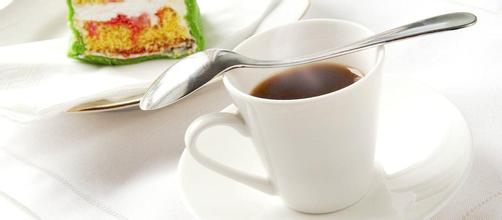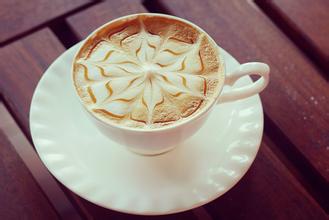The difference of Rosa coffee beans introduction to the origin of taste and flavor description with green bid
The difference of Rosa coffee beans introduction to the origin of taste and flavor description with green bid
Panamanian Emerald Manor (Panama Geisha Hacienda La Esmeralda) Rose Summer is the new king of boutique coffee, commonly known as "Red Standard Rose Summer", with high quality and high price. La Esmeralda Manor has won a total of 12 coffee competitions so far, setting a record of US $21 in 2004, US $50.25 in 2006 and US $130 in 2007. Of course, other countries have also raced a pound of good coffee close to $50, the best known for winning the championship in the 2011 Best Panama Competition (Best of Panama), with a cup test score of 92.3 points, which not only beat the most indicative and successive championships of the Jade Manor at that time, but also broke the record high of $70.25 per pound. The outstanding achievements in the next few years have been innumerable, and the final batch of the finest competition in Panama includes the fifth place in 2012, the 10th place in 2013, the 12th place in 2014, and the 14th place in 2015.
The species of Geisha was discovered in the rose forest of Ethiopia in 1931 and sent to the Coffee Institute in Kenya. Introduced to Uganda and Tanzania in 1936 and Costa Rica in 1953, little attention was paid to Rose Summer until one day, Don Pachi was originally brought to Costa Rica from the town of GESHA in southwestern Ethiopia, and then Rosa entered Panama along the southern route, where Esmerada Manor in Panama separated it from other varieties and won the National Coffee Competition.
Rose is full of sweetness and cleanliness on the palate, with rich aromas ranging from berry and citrus to mango, papaya and peach. A very obvious lemon (bergamot) general aftertaste is also a typical cup test attribute. So far, Rose Summer has been the champion of coffee varieties.
In 1931, it was exported to Kenya in obscurity from Geisha Mountain Mountain in southwestern Ethiopia, wandered to Tanzania and Costa Rica, was transplanted to Panama in the 1960s, and then went through nearly half a century before it became a blockbuster, beating the victorious armies of Bourbon, Kaddura, Kaduai and Tibika to win the first prize of the Panamanian National Treasure Bean Cup Test Competition in 2005, 2006 and 2007. In 2007, the International famous Bean Cup Test sponsored by the American Fine Coffee Association (SCAA) won the championship again, and the bidding price was sold at US $130 per pound, setting a record for the highest price in the history of competition beans. It is reported that the later Panamanian national treasure bean competition will be divided into two groups: Rose Summer and non-Rose Summer, so as not to be robbed of the brilliance of other varieties by Rose Summer. Rosa is a member of the Tibika family, but it became famous more than 70 years after leaving Ethiopia, and fulfilled the saying that Ethiopia is a treasure trove of Arabica genes. Giving a variety to go abroad is enough to stir up trouble in the coffee market.
Geisha, which is grown in many parts of the world, is the new king of boutique coffee, among which Panama, Guatemala, Colombia and other Latin American countries have higher quality and higher prices.

Important Notice :
前街咖啡 FrontStreet Coffee has moved to new addredd:
FrontStreet Coffee Address: 315,Donghua East Road,GuangZhou
Tel:020 38364473
- Prev

Introduction to the flavor description and taste treatment of coffee beans from magic manor in Colombia
Columbia Magic Manor Coffee beans produced regional flavor description taste treatment method Colombian coffee varieties are mainly Arabica coffee (coffea arabica), that is, small fruit coffee (small grain coffee), relatively speaking, large fruit coffee (coffea robusta) is mostly grown in Africa of origin, such as the famous Malagasy coffee. There are several varieties of small fruit coffee in the world.
- Next

Panamanian Flower Butterfly taste Coffee beans flavor description Grinding scale Variety Origin
Panamanian Flower Butterfly taste Coffee Bean Flavor description Grinding scale Coffee Origin data obtained show that, due to the historical reasons of the manor, in order to pursue yield at that time, the early rose summer varieties were mixed with Kaddura and Kaduai coffee trees, and coffee farmers did not reclassify them in order to facilitate picking, but directly mixed the three varieties.
Related
- Detailed explanation of Jadeite planting Land in Panamanian Jadeite Manor introduction to the grading system of Jadeite competitive bidding, Red bid, Green bid and Rose Summer
- Story of Coffee planting in Brenka region of Costa Rica Stonehenge Manor anaerobic heavy honey treatment of flavor mouth
- What's on the barrel of Blue Mountain Coffee beans?
- Can American coffee also pull flowers? How to use hot American style to pull out a good-looking pattern?
- Can you make a cold extract with coffee beans? What is the right proportion for cold-extracted coffee formula?
- Indonesian PWN Gold Mandrine Coffee Origin Features Flavor How to Chong? Mandolin coffee is American.
- A brief introduction to the flavor characteristics of Brazilian yellow bourbon coffee beans
- What is the effect of different water quality on the flavor of cold-extracted coffee? What kind of water is best for brewing coffee?
- Why do you think of Rose Summer whenever you mention Panamanian coffee?
- Introduction to the characteristics of authentic blue mountain coffee bean producing areas? What is the CIB Coffee Authority in Jamaica?

